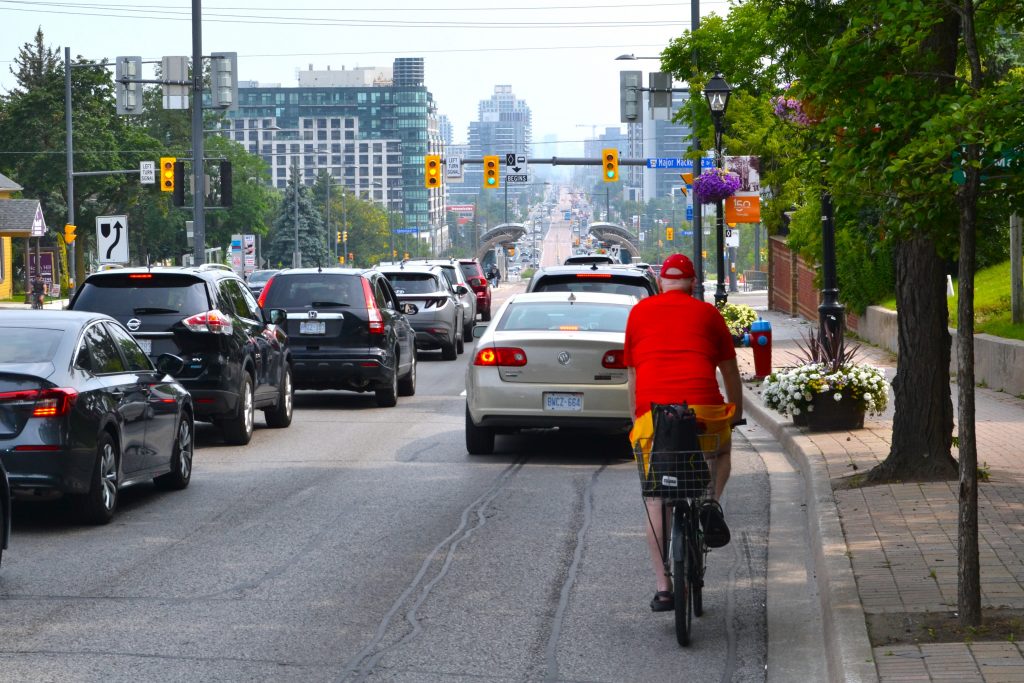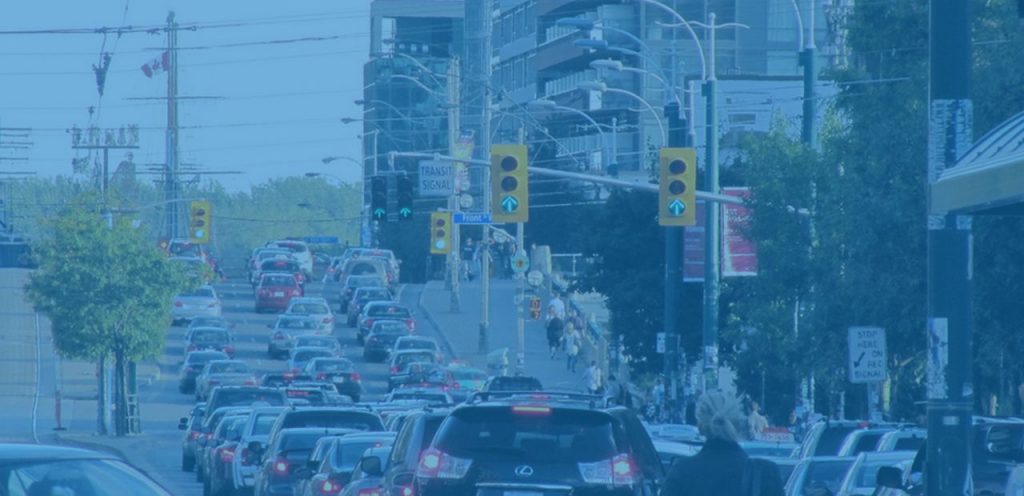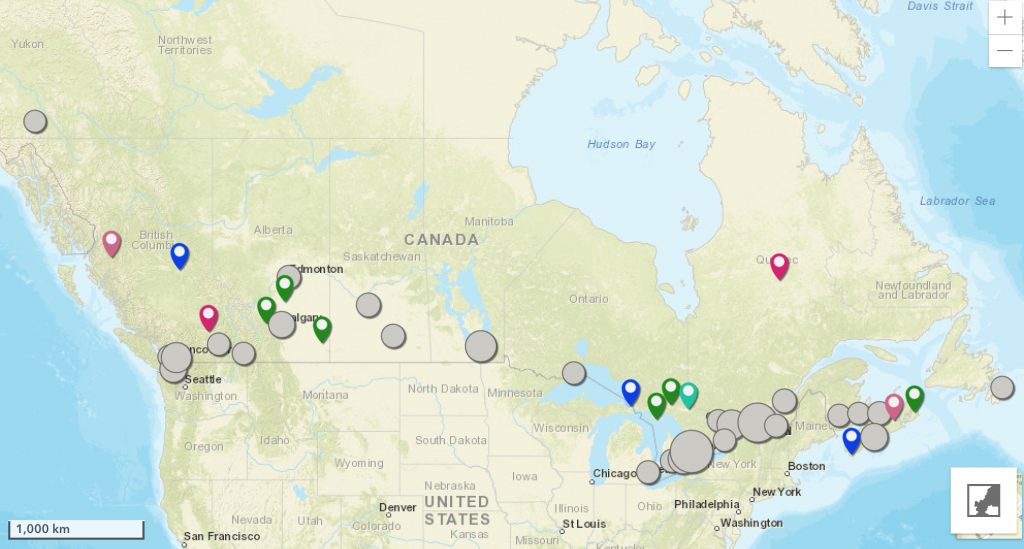My Public Transit Experience in Ghana and Canada
Robert Arku is a PhD student in Geography at the University of Toronto. His work focuses on the impact of transportation on housing affordability and residential migration. In this piece, he compares his experiences with transit in Ghana, where he grew up, to transit in Ontario.
I personally believe one can experience the culture of a place through its public transit system. Some are privileged to experience the transit systems of other places outside their places of birth. For those who have not had this opportunity, I have got you covered as this post aims to share my public transit experiences from both Ghanaian and Canadian contexts (not the same as an in-person experience, but hey!).
My Ghanaian experience is largely based on 1) growing up in Accra, 2) living in Kumasi (for five years), where I obtained my Bachelor’s degree, and 3) visiting my extended family in the Volta Region. My Canadian experience is mainly from residing in Ontario (for almost five years now) – having lived in the Kitchener-Waterloo Region, where I obtained my Master’s degree, and currently located in Toronto, where I am pursuing a doctoral degree.
This article focuses mainly on bus operation within cities, thereby excluding other public travel modes such trains and ride-hailing services (e.g., uber and taxis) and long-distance journeys.
Due to factors including historical development, economic conditions and geographical constraints, public transit systems are expected to vary significantly across different geographical contexts. From living in these two countries, I can give a first-hand account on the differences along four areas: a) a brief description based on vehicle types and capacity, b) ownership and management, c) fare structure, and d) nature of service.
Vehicle Type and Capacity
The buses in Ghana are popularly referred to as “Trotro.” “Trotros”, which are ubiquitous, are minivans or small buses, with limited seating capacity ranging between 12-20 individuals. There is a “trotro” driver and a driver’s mate (or conductor). While the driver operates the vehicle, the driver’s mate is in charge of announcing the “Trotro” route and destination to attract passengers, fare collection, and announcing stops along the way.
My favorite thing about “trotros” are the sometimes hilarious but insightful inscriptions (or proverbs) on the buses. Here are two of my favorites seen so far:
- Yɛne Wo Sere Kwa (translation: we are merely laughing with you, but we are not interested in your welfare”)
- No food for the lazy man

On the other hand, in Canada, the public transit system often consists of large buses with higher passenger capacities – as there are both seating and standing areas. However, there isn’t a driver’s mate as the bus displays the route and destination.

Ownership and Management
In Canada, public transit is mainly owned, regulated and operated by government and municipal agencies. On the other hand, in Ghana, “trotros” are privately-owned and also a means of small-scale entrepreneurship. So, if you can afford to buy a minivan, you are welcome to start a “trotro” business.
Fare Structure
This is one aspect that I actually find interesting because of how fares are regulated and implemented. Canadian municipalities often adopt a system, where a fixed fare (say $3.50) offers you unlimited travel within a specified timeframe, typically around two hours (there are variations to this though – e.g., the use of monthly passes). As long as you within two-hours of when you paid your fare, you incur no extra costs in the subsequent use of public transit. I must confess that this has sometimes shaped how I plan my day as I try to, as much as possible, fit in different activities/errands within two hours.
Public transit fares are implemented differently in Ghana. More pointedly, distance is a key factor in determining fares. The farther away your destination is from your origin/point of boarding, the higher the fare paid. (At this point, I am very positive you are already thinking about the pros and cons of these different fare systems).
Thus, the calculation of fares can be very complex as it is often not standardized – I often refer to this as “Trotro Maths.” Hear me out! First, there are high permutations of different possible journeys (origin-destination) that can be made along a route (in a single direction). For example, 10 different journeys can be made along a route with 5 stops – yup! I counted. (This is a simplified example, so imagine for over 20 stops). Given these numerous possible origin-destination points along a route, drivers and their mates use their knowledge, experience and estimation skills to determine fares based on distance.
I came across this tweet on how “trotro maths” can look like. In the instance shown in the tweet, some mates are kind enough to allow you take the full trip.

This is one aspect that I actually find interesting because of how fares are regulated and implemented. Canadian municipalities often adopt a system, where a fixed fare (say $3.50) offers you unlimited travel within a specified timeframe, typically around two hours (there are variations to this though – e.g., the use of monthly passes). As long as you within two-hours of when you paid your fare, you incur no extra costs in the subsequent use of public transit. I must confess that this has sometimes shaped how I plan my day as I try to, as much as possible, fit in different activities/errands within two hours.
Public transit fares are implemented differently in Ghana. More pointedly, distance is a key factor in determining fares. The farther away your destination is from your origin/point of boarding, the higher the fare paid. (At this point, I am very positive you are already thinking about the pros and cons of these different fare systems).
Thus, the calculation of fares can be very complex as it is often not standardized – I often refer to this as “Trotro Maths.” Hear me out! First, there are high permutations of different possible journeys (origin-destination) that can be made along a route (in a single direction). For example, 10 different journeys can be made along a route with 5 stops – yup! I counted. (This is a simplified example, so imagine for over 20 stops). Given these numerous possible origin-destination points along a route, drivers and their mates use their knowledge, experience and estimation skills to determine fares based on distance.
Over time, the distance-based fares for routes are established but issues arise when “trotro” drivers and their mates decide to increase fares due to inflation and high cost of living. This often leads to disagreements and negotiations between the driver’s mate and passengers. Over time, the public becomes used to these new fares – until the next economic concern, where drivers and their mates have to refer to their mental “Trotro Maths” text books.
Service Frequency
In Canada, public transit systems are usually operated on fixed schedules and known service intervals. Using google maps, one can easily determine when the next bus is coming (although buses sometimes tend to delay, which can be sometimes frustrating especially in the winter).
Service frequency in Ghana can be compared to a game of Russian roulette due to a level of uncertainty and unpredictability. The schedules of “trotros” are very flexible as, for instance, drivers wait for the vehicle to fill up with passengers before departing. This can be very inconveniencing especially during off-peak hours.
Conclusions
This post is not intended to pit one transit system against another. Instead, my objective is to serve as a reminder on how transit systems are highly dynamic and shaped based on contextual realities. As well, for those unfamiliar with the transit systems in Ghana and/or Canada, this is to expand your knowledge about how transit works in these countries – admittedly, the transit systems are likely to vary slightly in different parts of the countries. So, if you happen to be in Ghana for the first time, keep your ears opened to hear the destinations and routes of the “trotro.” Likewise, if you are Canada for the first time, expect to board a crowded bus especially during peak hours.
You may also like
 Moving towards cycling equity in Toronto: infrastructures, social contexts, and spatial difference
Moving towards cycling equity in Toronto: infrastructures, social contexts, and spatial difference
Thomas van Laake, doctoral researcher at the University of Manchester Introduction In recent years, equity and justice have become central issues in bicycle planning and… Read More
 Mobilizing for transportation workers: First steps towards a more just vehicle-for-hire industry in Toronto
Mobilizing for transportation workers: First steps towards a more just vehicle-for-hire industry in Toronto
by Thorben Wieditz, Director of Metstrat Digital platforms are reshaping how we work, live, and get around. The rise of the… Read More
 New Interactive Map and Updated Catalogue of Community Initiatives Addressing Transport Poverty Provides Valuable Repository of Local Knowledge for Mobilizing Justice Researchers and Partners
New Interactive Map and Updated Catalogue of Community Initiatives Addressing Transport Poverty Provides Valuable Repository of Local Knowledge for Mobilizing Justice Researchers and Partners
Nancy Smith Lea is the Community Co-Lead of the Mobilizing Justice Transportation Modes Thematic Working Group and a Senior Advisor at The Centre for Active… Read More